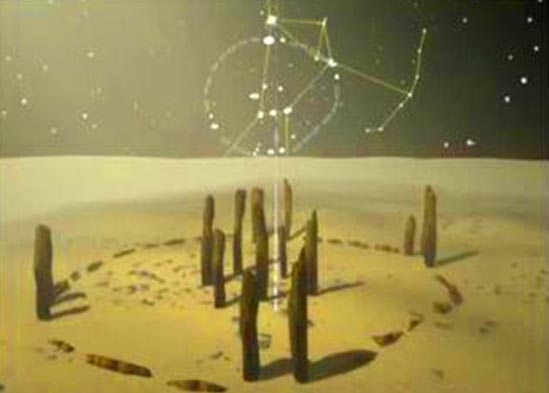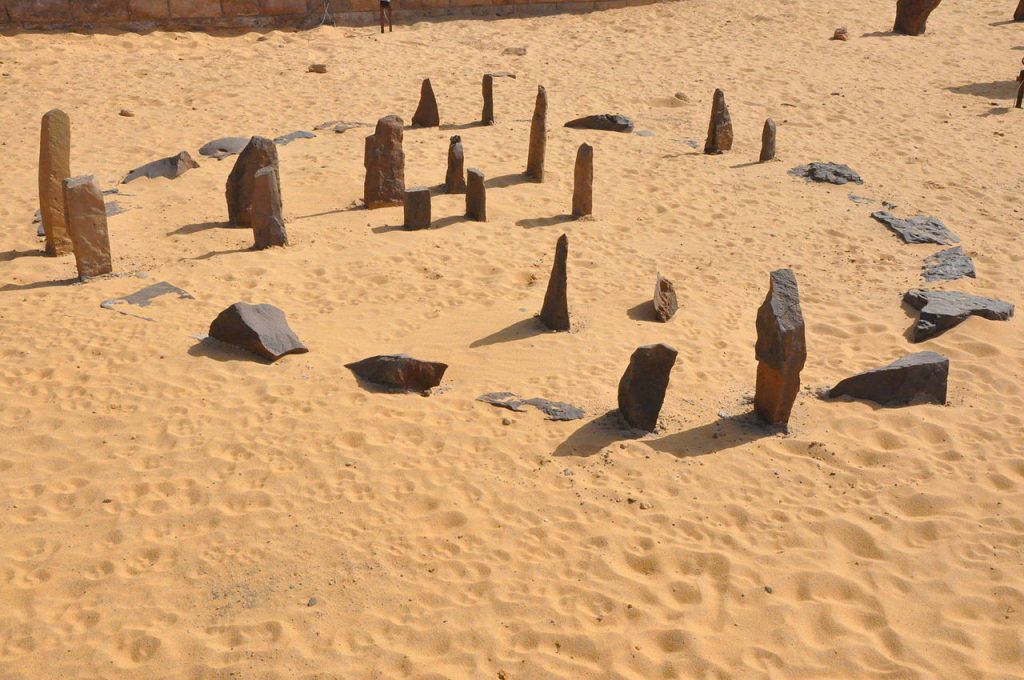Have you ever been to the far south of Egypt? This is a place where one could stand up just a few steps away from one of the first scientific sites in the world built and erected as a hub of knowledge and a prehistoric institution for science.
Called Nabta Playa, it is the first ever astronomical observatory on earth, about 1,000 years older than Britain’s Stonehenge.
Generally, the Nabta Basin in the south of Egypt is a major archaeological site that is exceptionally rich in prehistoric remains of early Holocene and late Neolithic ages.
📚 Read Also: How Astronomy Benefits Society & Humankind
The basin is located approximately 800 kilometers south of Cairo, 100km west of Abu Simbel city, 200km east of Sharq El Uweinat city and 30km north of the Egyptian-Sudanese borders.

Nabta encompasses large megalithic alignment, a “calendar circle” in addition to two small stone-covered burial mounds called “tumuli”.
The Egyptian western desert is currently dry, yet 8,000 or 10,000 years ago the region was blessed with numerous high-precipitation ages which exceeded 500 mm per year. The most recent humid times took place in the last interglacial and last glaciation periods.
During these periods, North Africa, including Egypt, was wholly covered with deciduous forests, tropical woods, and savanna and hosted countless species of fauna and flora such as extinct types of buffalos and large giraffes, varieties of antelopes and gazelles.
Prehistoric Calendar
Nearly around 8,000 B.C, and as a result of decreasing rain levels and shortage of water, food and animal herds, the early proto-Egyptians left the vast areas of Egypt and were obligated by nature to be concentrated in the central region of the Nile valley and Delta which became the only regions of Egypt with sufficient water supplies.
Modern researches and studies which excavated the area suggested that Nabta Playa is a prehistoric “calendar”, marking the summer solstice; an astronomical phenomenon which takes place twice a year when the north and south hemispheres of earth are inclined respectively towards the sun causing two summer seasons in both hemispheres respectively.

In Nabta Playa, there are three stones inside the calendar circle representing the famous three bright stars of Orion’s Belt.
That’s while the other three stones inside Nabta Playa calendar circle represent the bright stars which look like the shoulders and head of Orion Constellation as they appeared in the sky of Egypt.
The 3.6-meter-wide circle of Nabta Playa was constructed as a conceptual representation of the celestial sphere’s motion.
In addition to the calendar circle there are alignments of large megalithic stones which represent actual companion celestial objects to the previously mentioned stars.
Using satellites, archeoastronomers and astrophysicists from Southern Methodist University (SMU) of Dallas confirmed that Nabta Playa is aligned with the stars Sirius, Arcturus, Alpha Centauri and Orion belt.
Modern Sciences
Meaning that, the Egyptian designers of those megaliths had basic understanding of physics, and knowledge of astronomy that rivaled ours today in the 21st century.
Sorrowfully, several decades of tyranny in Egypt have left Nabta Playa in total neglect. The previous ministries and governorates didn’t pay any attention to this important scientific location. No paved highways to it, no lighting in the site of that historic monument, no organised tourism tours, nothing.
It is necessary to emphasize that what has systematically been devastated over decades will not be reformed overnight.
The process of change will take considerable time, and it requires extreme patience, diligence, and persistence. Its fruits will mostly be seen by future generations if we act now with faith, determination and resolve.
This article is from our archive, originally published on an earlier date, and highlighted now for its importance
References:
- Andrew L. Slayman.Neolithic Skywatchers. A publication of the Archaeological Institute of America. May 27, 1998.
- Ancient Observatories: Timeless Knowledge. NASA.
- Ancient Astronomy: Is Egypt’s “Stonehenge” the Oldest?Space Today Online. 2006.
- Oldest Astronomical Megalith Alignment Discovered In Southern Egypt By Science Team. University of Colorado Boulder. March 31, 1998.
- McK Mahille, J.; Schild, R.; Wendorf, F.; Brenmer, R.Astronomy of Nabta Playa. African Sky, Vol. 11, p.2. University of Harvard. AA(Department of Astrophysical and Planetary Sciences, University of Colorado, USA Kim. [email protected]), AB(Institute of Archaeology and Ethnology, Polish Academy of Science, Warsaw, Poland). AC(Department of Anthropology, Southern Methodist University, Dallas, USA), AD(Aldwick, West Sussex, UK). July 2007.


